Articles Common Foot Injuries
We have compiled a list of common foot injuries. It is important to accurately diagnose and identify the cause of these injuries as this will direct treatment to ensure the best outcomes.
Common Foot Injuries- Plantar Fasciitis
The plantar fascia is a tough band of fibrous tissue located over the sole of the foot. Its role is to provide support for the foot by maintaining its natural arch. This is essentially an overuse condition, inflammation of the plantar fascia can occur due to prolonged stretching (i.e. prolonged weight bearing) or bruising (i.e. landing heavily on the heel). This problem commonly occurs in people with flat feet.
Symptoms include pain on the underside of the heel or in the arch of the foot, pain and stiffness in the morning that improves with movement and an increase in pain during and after activity.
This condition is often seen in:
- occupations requiring prolonged standing
- long distance runners
- people with flat feet
- people who are over weight
Plantar fasciitis can be a very persistent and stubborn condition. Correction of foot wear, modified rest and activity modification should be considered to successfully treat this condition.
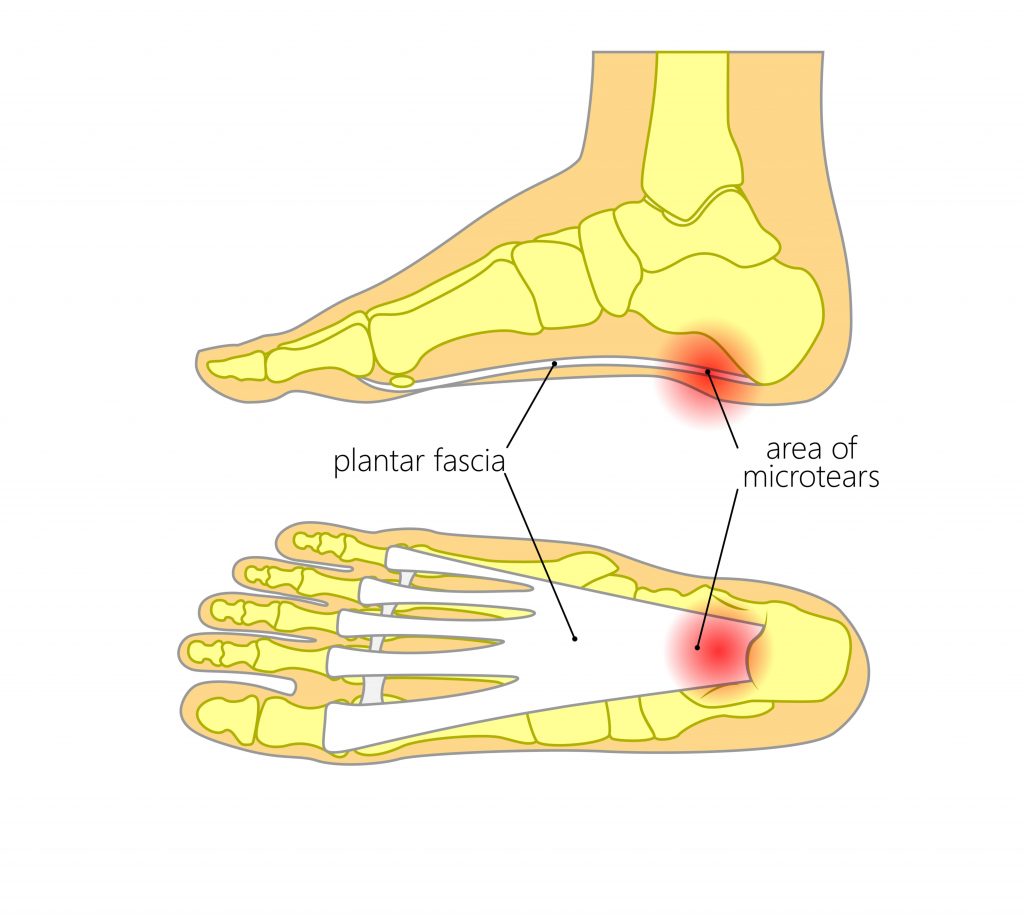
Common Foot Injuries- Heel Spur (Calcaneal Spurs)
A heel spur is a small outgrowth of bone normally located on the underside of the heel. These are often detected on x rays. People naturally attribute their heel pain to the presence of the spur but in actual fact this is the long-term result of having plantar fasciitis.
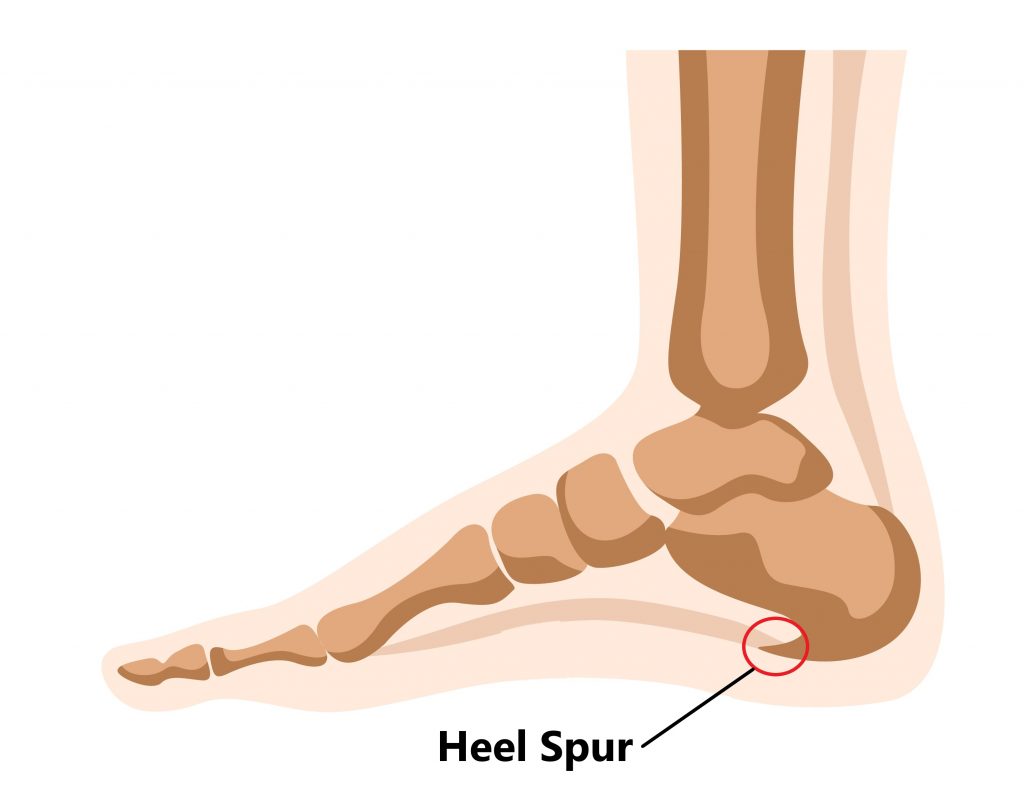
Common Foot Injuries- Flat Feet/Pronated Feet/ Pes Planus
Being flat footed is a term used to describe a postural abnormality where the arch on the inner side of the foot is flattened out. In children the arches typically do not develop until 6 yrs of age. A small percentage of individuals will continue to have flat feet into adulthood. This can also gradually develop overtime, being overweight, older age and having diabetes can increase your risk.
Having flat feet places more strain on the muscles, tendons, ligaments and joints which can give rise to a plethora of lower limb (i.e. plantar fasciitis, shin splints, hip impingement) and back problems.
This condition can be separated into 2 categories:
Flexible Flat Feet
- inner arch will be present in non weight bearing positions but not in weight bearing positions.
- do not have to be treated if there are no symptoms
- more common
- typically due to muscle imbalances, tendon tightness (Achilles tendon), overstretched/ruptured tendons/ligaments
- treatment consists of orthotic prescription, stretching and strengthening exercises, casting and bracing
- surgery less common
Rigid Flat Feet
- inner arch with not be present in both weight bearing and non weight bearing positions
- due to structural bony abnormalities in the feet (congenital abnormalities, arthritis)
- presence of foot stiffness (in children)
- should be monitored by a paediatrician (children/teenagers) or an orthopaedic surgeon (if symptoms are severe in adults)
- higher chance of surgery if conservative treatment (as above) is unsuccessful
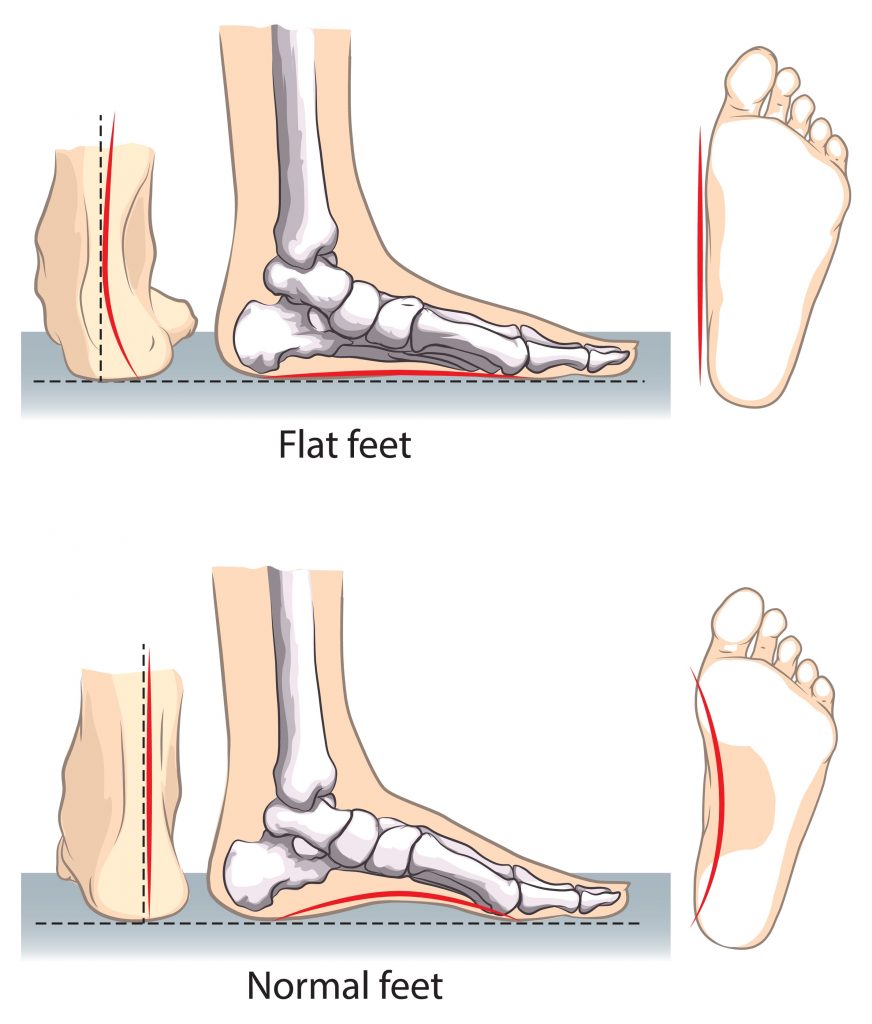
Heel Fat Pad Syndrome
Underneath your heel is a fat pad. As you can imagine this is soft and squishy and designed to absorb impact. Activities involving prolonged weight bearing and impact can lead to irritation of the fat pad causing heel pain. It is often quite hard to distinguish between plantar fasciitis and fat pad syndrome due to similar symptoms and location of pain. A quick test is to cushion the heel (i.e. gel heel cups) to see if you get any relief of symptoms.
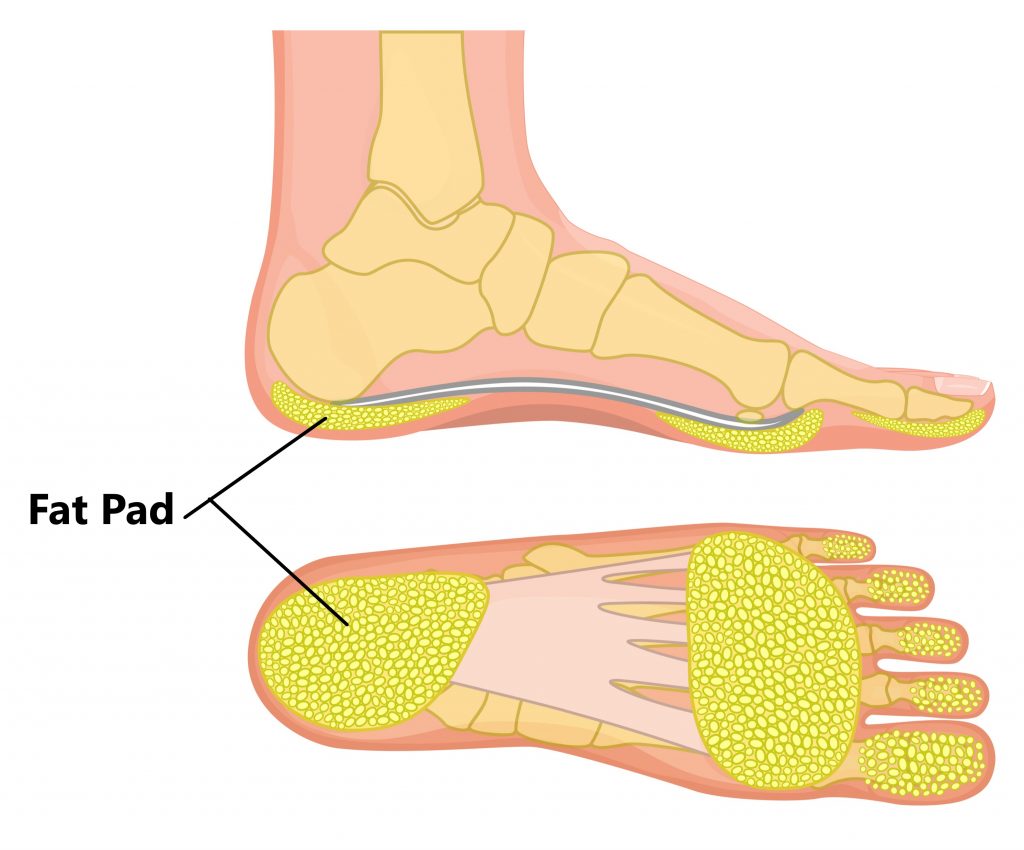
Common Foot Injuries- Metatarsalgia
This condition refers to pain on the underside of the forefoot. It arises from too much weight being distributed through this area of the foot leading to inflammation. This condition can occur due to overuse (i.e. running sports), degeneration and anatomical abnormalities of the foot.
Symptoms can include pain over the affect area, pain with walking particularly when pushing off and pain with impact over the forefoot (i.e. jogging). Modification of foot wear, modified rest and addressing muscle imbalances are often required to successfully treat this condition.
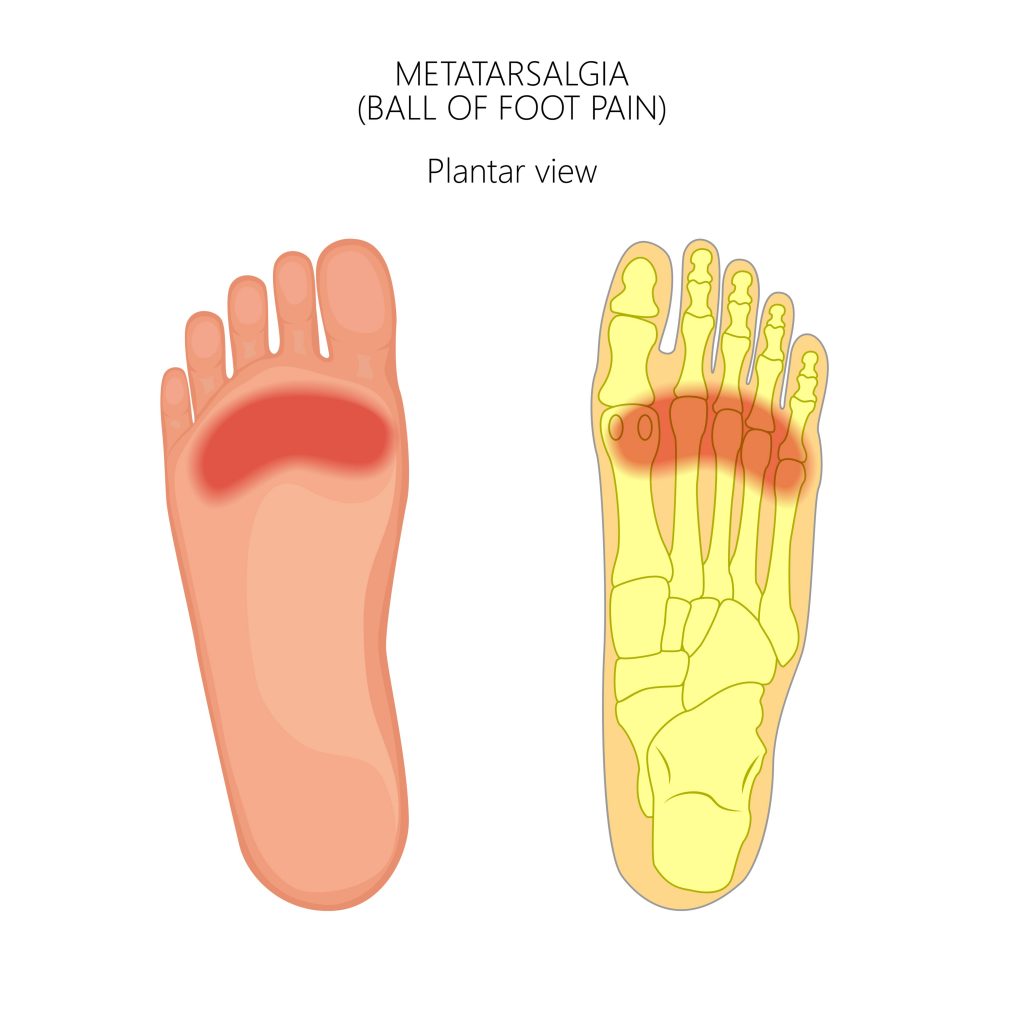
Common Foot Injuries- Osteoarthritis (OA)
As we age our joints begin to degenerate and we can develop arthritis. More commonly seen in older populations, OA of the feet can restrict an individual’s balance and mobility severely impacting their quality of life. Symptoms can include pain, swelling, heat, redness and joint deformity. Maintaining a healthy weight and wearing good supportive foot wear is very important in these situations.
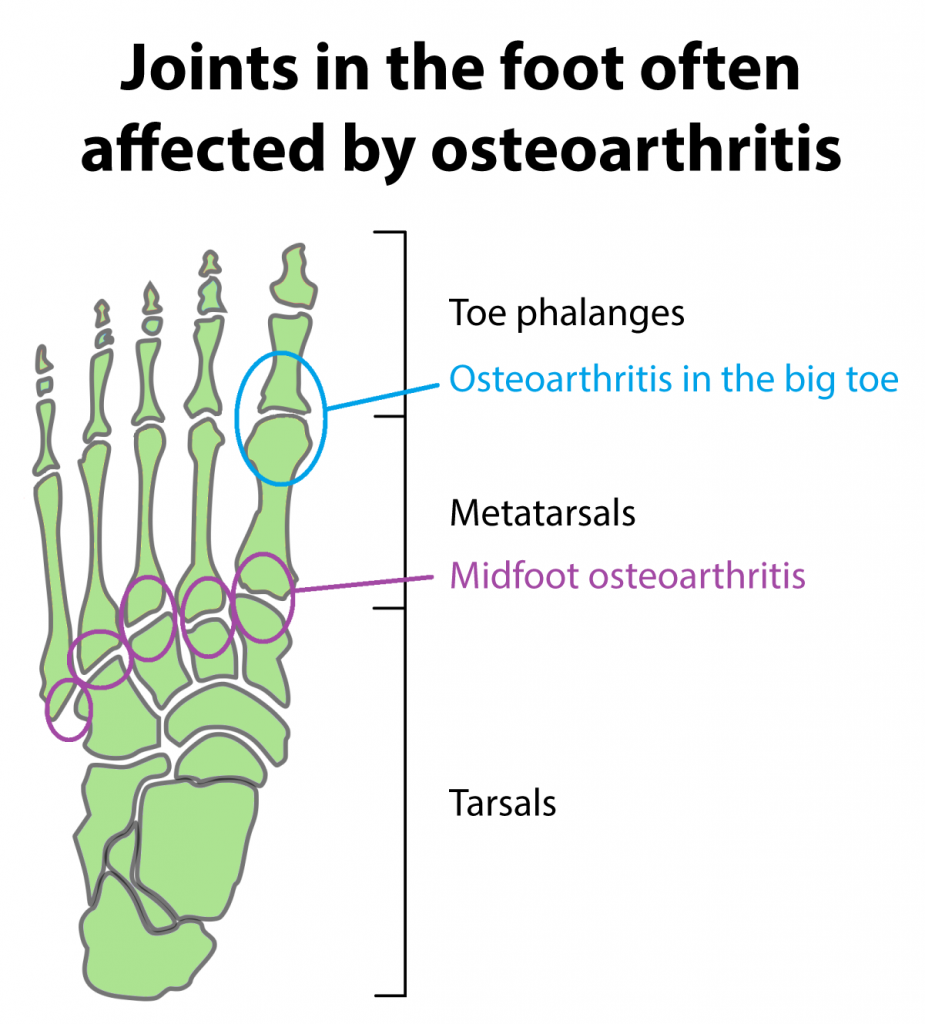
Common Foot Injuries- Gout
Gout is a form of arthritis that is characterised by a sudden onset of joint pain and swelling with no history of trauma. This commonly affects the joint of the big toe. Risk factors include a family history of the disease, type 2 diabetes, kidney disease and use of diuretics. Certain triggers have been identified which can be modified to lower your risk:
- being overweight
- excessive alcohol consumption
- excessive consumption of high purine foods (i.e. meat, shell fish, sweet breads, offal and sugary food/drinks
- crash dieting
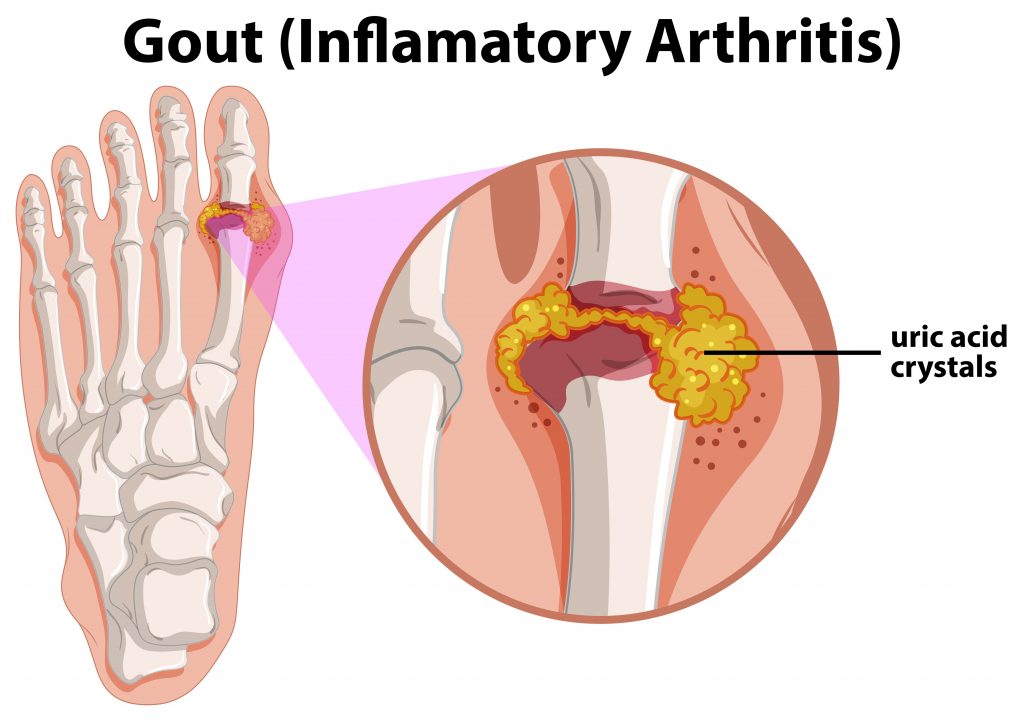
Common Foot Injuries- Fractures
Foot fractures are normally the result of sudden impact (i.e. landing heavily on the foot) or repeated impact (please see our article on “bones’ regarding stress fractures). Symptoms can include severe pain, swelling, deformity, loss of function, bony tenderness, foot numbness, weakness and instability. Fractures involving the joint surfaces have more complications and can predispose people to an early onset of arthritis.
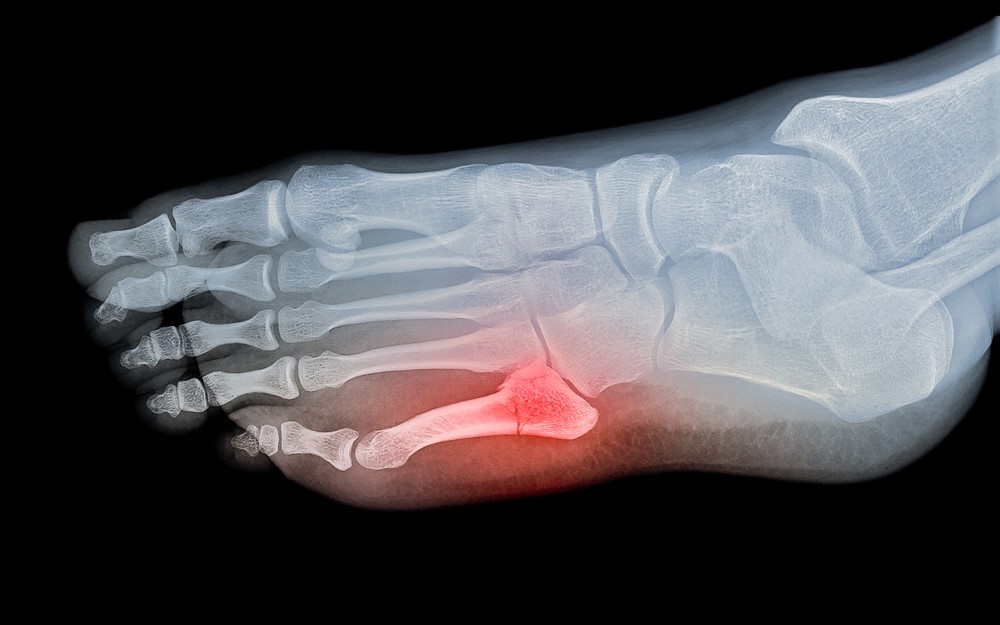
Common Foot Injuries- Nerve Injuries
Symptoms of pins and needles, burning, weakness and numbness can be suggestive of a nerve injury. Damage to the localised nerves in the foot can give rise to these symptoms but more commonly issues further “upstream’ (i.e. lower back) are often the root cause.
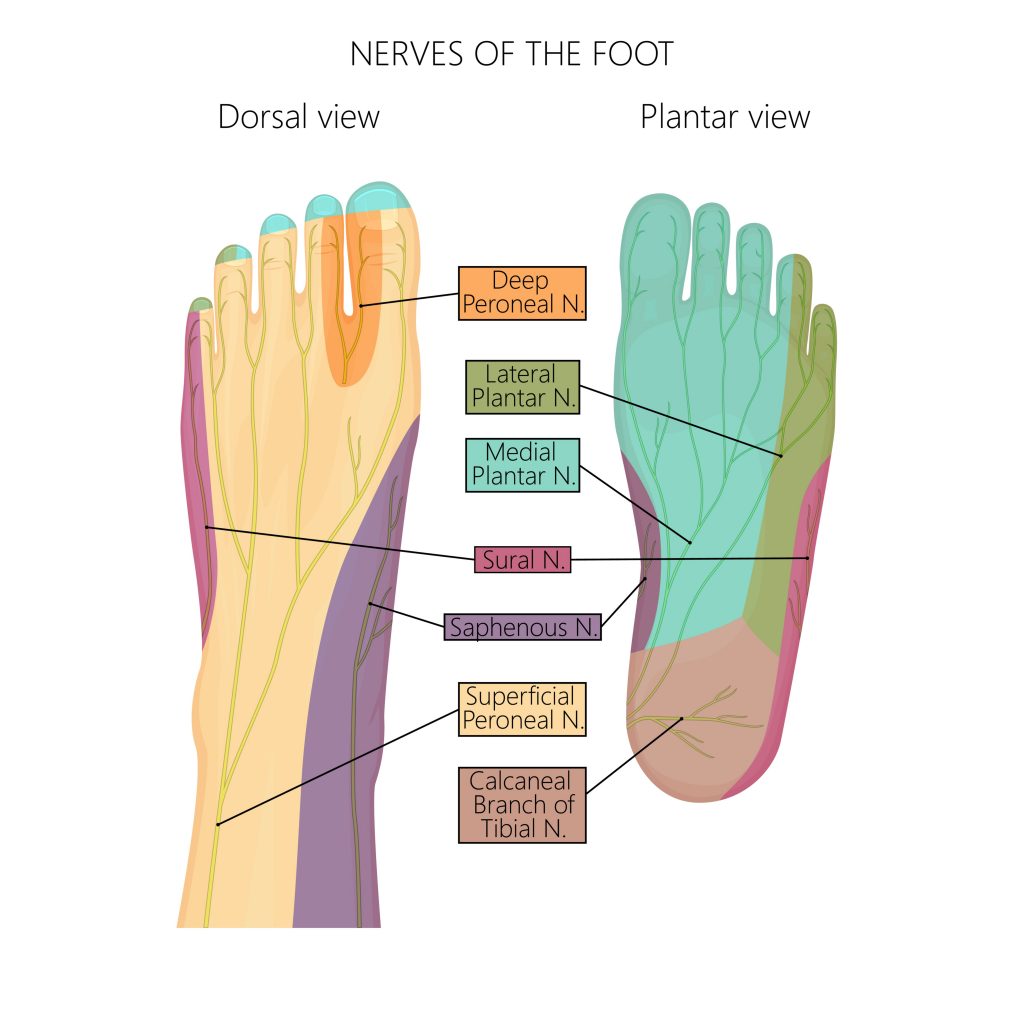
Please keep in mind the information provided is general in nature and should not be used as a substitute to consult your treating health professional. If you have any specific questions or require assistance with your individual treatment requirements please do not hesitate to contact My Family Physio inside MyHealth Medical Centre, Mona Vale.
Related Articles